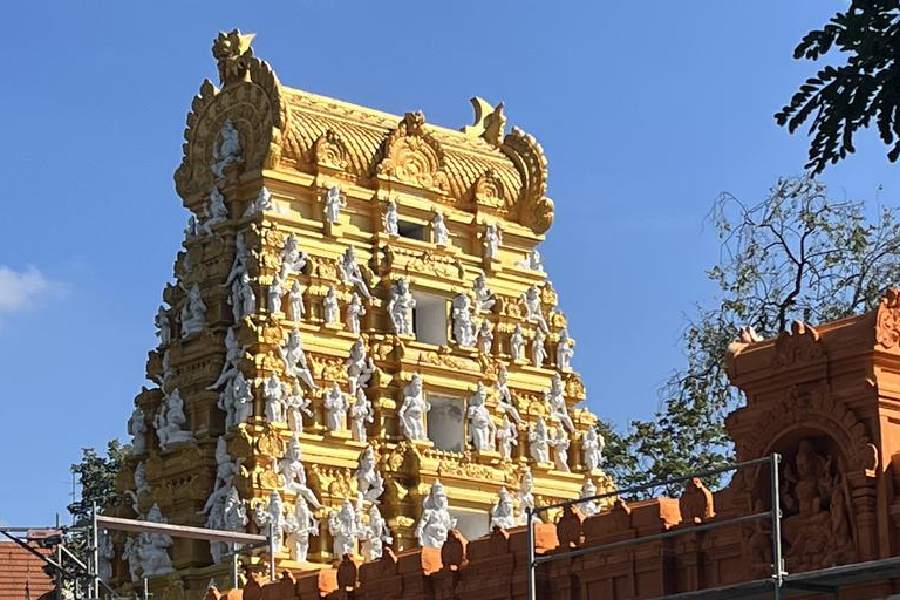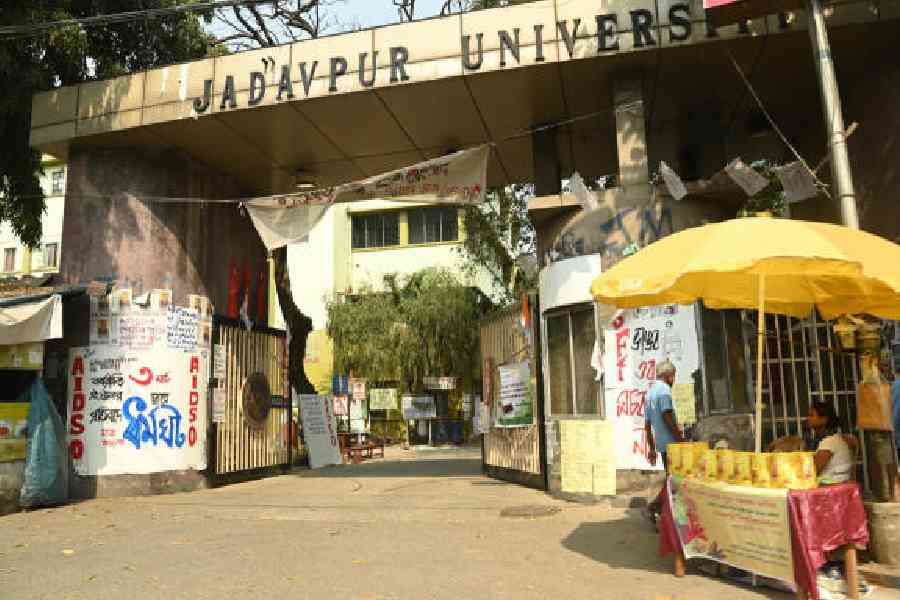Vilwanathan Krishnamurthy can be described as a happy person. Almost 20 years ago, the 70-year-old began his voluntary work to build a Hindu temple in Berlin. Now, he stands proudly in Germany's late summer sun as he points out the features of the new building, explains the choices of colors and materials. He hopes that in November the massive, six-day-long temple opening celebration can take place. "We're waiting for the gods," he told DW with a smile.
Almost 20 years – that is a long time for a construction project, even in Berlin. But it also explains a lot about how the people referred to as "guest workers" eventually become Berliners and why the German capital is growing more religiously diverse.
Krishnamurthy describes to DW how he came with his wife to what was then West Berlin almost 50 years ago and found work with electrical company AEG "for three Deutschmarks an hour" (today, that would equate to about €1.50, $1.62). Then he founded an association with the purpose of building a temple. This temple, he said, "is a dream for me. As a Hindu, I can also celebrate everything at home, but I cannot celebrate it alongside other people. It requires a space to celebrate with others, with friends, and to enjoy doing so."
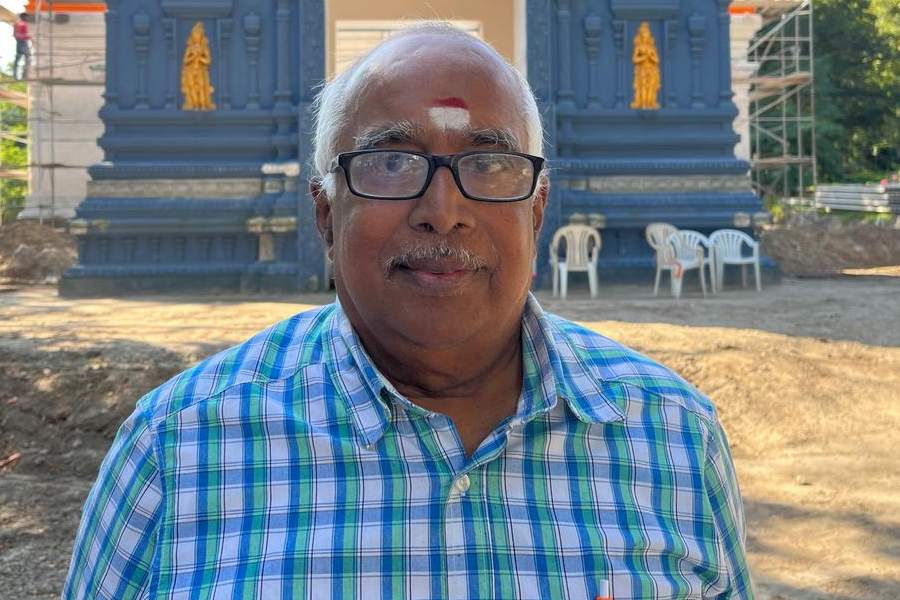
Vishnawanathan Krishnamurthy leads the association that built the temple Deutsche Welle
The association to build the Sri-Ganesha Hindu Temple has been active since 2004. Shortly thereafter, the district authority offered the association the plot of land on the edge of Hasenheide park, between the districts of Kreuzberg, Neukölln and Tempelhof.
"A gift from the gods," Krishnamurthy called it. Building work for the new facility was due to commence in 2007, then 2010. There were many groundbreaking ceremonies; various dates were set for its completion. But for a long time, there was not enough money. Krishnamurthy recounts the many phases of the building process in Germany: regulations, approval procedures, deadlines, financing plans.
The temple, which is now almost finished — Krishnamurthy explains it without complaint — was built solely with the foundation's own funds. "We have carried this through with our own donations. There was no support from the Berlin Senate, from the district authority or from the federal government. I can also understand that." He continued: "We did not want to build a temple on credit. Our future generations would have eventually had to pay it back. So, we were dependent on donations."
At this point, this local story of a Berlin district intersects with the big story of the global economy during a tech boom. According to the Indian embassy, up to 15,000 people from India live in Berlin, he said. However, according to other estimates, there are up to 20,000 people from the subcontinent living in the German capital. Thousands of young people from India working in the tech sector are also drawn to Berlin by IT companies.
The tallest high-rise building currently under construction in Berlin, locally known as "Amazon Tower," is about three kilometers (1.9 miles) from the temple. The global online retailer will occupy a planned 28 floors — most of the tower's real estate. And that's where young Indians in Berlin have stepped up. "In the past five years," the temple initiator said, "we have had a significant growth in donations. Young people are prepared to give generously."
Some of the young people, Krishnamurthy said, made four-figure donations. Or more. "They have come to Germany because of work. And they want, as we did when we came, the familiar rituals which they had in India. But both women and men go to work. That means there is no time left at home for the rituals." So, they are waiting for the temple.
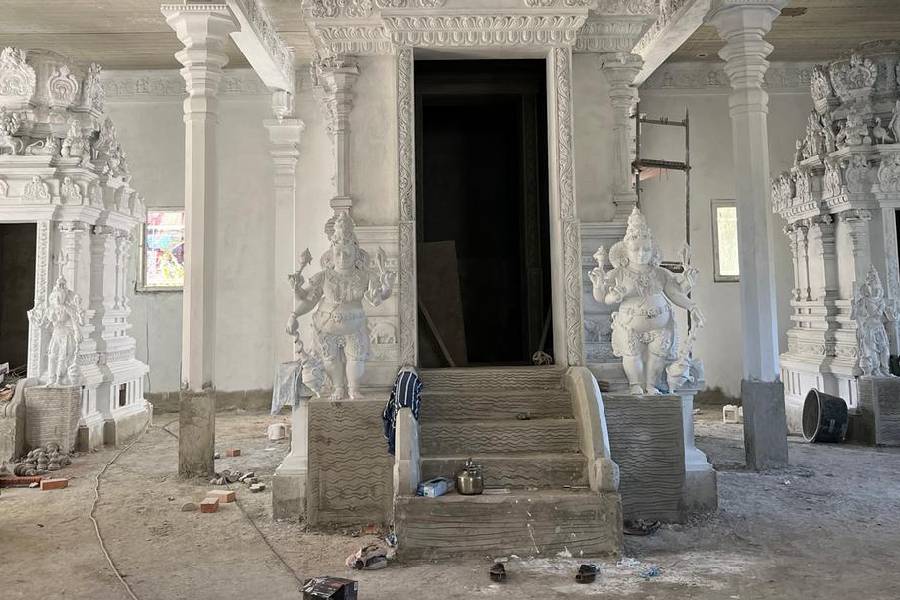
The niches inside the temple are waiting for the stone figures that they will soon house Deutsche Welle
The influx of donations made it possible to make quick progress with the work this year. During the European summer, up to 50 specialist temple craftspeople called sthapati were on site. As of now the actual temple building is still hidden behind a temporary facility, but already the roof glows in a bright saffron. In front of the building, now in beautiful bright colors, stands an almost 18-meter (60-foot) high tower, which can be seen by passersby on the four-lane Hasenheide.
But the gods are still not there yet. Krishnamurthy explains the expert work of the people in India who craft them, painstakingly making the figures from solid stone according to 5,000-year-old specifications. There should be 27 of them in total, he said. The niches intended for them in the not-yet-painted interior of the temple remain empty. In front of it, also in white, stone figures stand as guards.
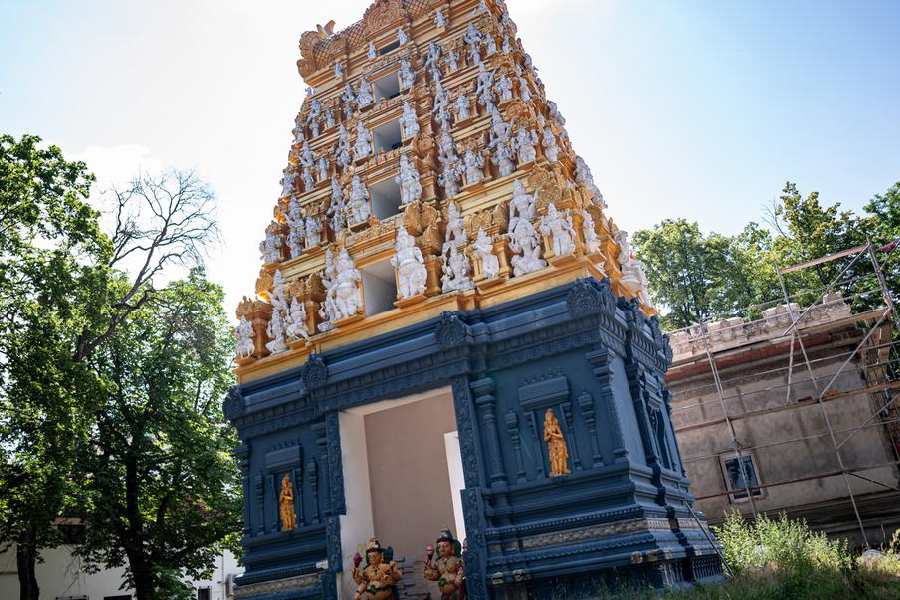
The entrance tower to the temple complex portrays over 200 figures of various deities Deutsche Welle
The temple builder is informed and satisfied with the progress of the work. He explained the transport route from India to Berlin, also the need to check the finished work and the stone, through a watering process over several weeks for example. In November, near the time of the Diwali festival of lights, he wants to be finished, then the six-day Kumbhabhishekham consecration ceremony can begin.
"We believe in God, that he supports us." Because in December, he said, it is Margashirsha, the sleeping month of the gods in the Hindu calendar, and thus not be possible to hold the consecration ceremony during this time.
As a young person in Berlin, Krishnamurthy more frequently attended a small temple in Kreuzberg. Every year he made a pilgrimage to the western German city of Hamm, where about 20 years ago the Tamil community established the hitherto largest Hindu temple in Germany. The new building in Berlin will be about 3 meters higher. "When I have everything finished, then I will have peace."

The Hindu temple in Hamm was previously Germany's largest Deutsche Welle
But for the 70-year-old, who speaks about the energy of the meditation in the temple, it is not about the numbers. He emphasizes the importance of togetherness and dialogue. On this day, some 100 people came to the provisional prayer room, which is only open for two hours each day. They meditate or receive a blessing. Every year, 60 or 70 school classes visit to learn about the temple.
The Hindu senior citizen is also a Kreuzberger through and through. Krishnamurthy gushes about the multicultural character of his neighborhood, home to a wide variety of people from vastly different parts of the world. He mentions his contact with the imam of the nearby mosque, with a protestant pastor, with the nuncio — the Pope's ambassador in Berlin who has his residence at the other end of the Hasenheide. "It is a good location for the temple here, between Tempelhof, Kreuzberg and Neukölln."

